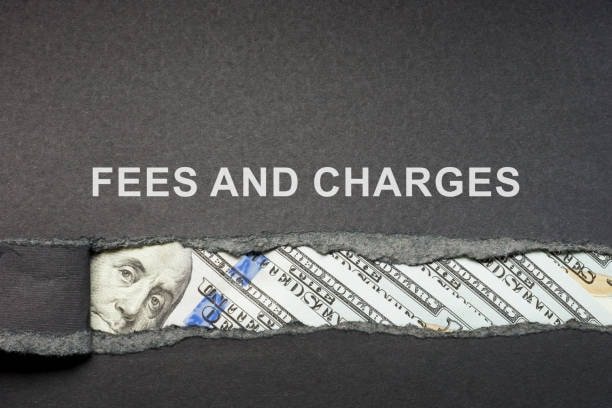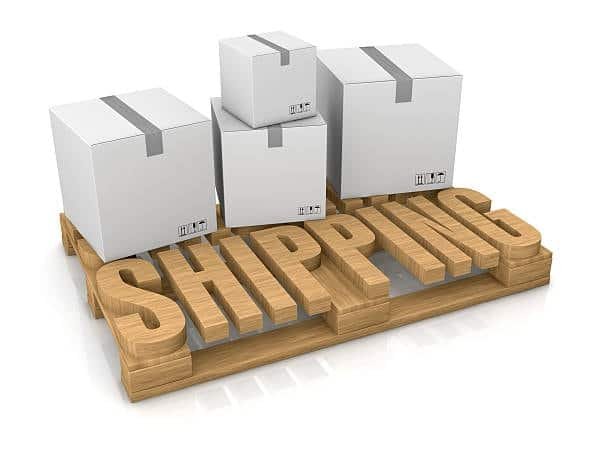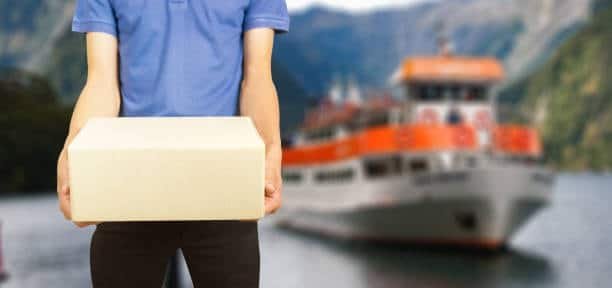Cara Mengira Caj CFS: Panduan Lengkap untuk Pengimport dan Pengeksport
By Guanwutong / June 13, 2025
Many importers and exporters have a hard time figuring out and estimating Container Freight Station (CFS) charges which make up a big part of all international shipping costs.
Because these charges often add a lot to your logistics budget, it is important to understand how to calculate them well. You will learn all about consolidated shipments, CFS charges and cfs shipping , from the first principles to the most advanced ways of calculating them.

1. Apakah itu Stesen Pengangkutan Kontena (CFS)?
A Container Freight Station helps by merging Less than Container Load (LCL) cargo and placing it into containers for smooth ocean transport or removing cargo from containers ready for the final delivery step. With Full Container Load (FCL) shipments, you rent a full container, but with lcl shipments, your cargo is combined with other shippers in a container and handled at a specialized CFS.
2. Understanding CFS Operations and Services
Important functions at the CFS facility are accepting, checking and handling cargo, handling documentation, managing the grouping and separation of goods, temporary storage and assistance with customs clearance procedures.
To operate safely, storage firms need specific machinery, well-trained staff and specific areas which are among the factors that lead to more expenses for you. Once cargo gets to a CFS, it is inspected, checked for weight and measurements and all documents are verified before it is prepared for further transit.
3. Primary Types of CFS Charges
CFS operations require several different kinds of charges and each charge plays a unique function in handling cargo. The main categories consist of handling charges which handle the loading and moving of your goods throughout the facility, which contribute to overall transportation costs.
Usually, these charges appear per shipment or for each item you’re shipping and they cover the work and tools used to receive, sort and get your cargo ready for moving or delivery.

4. Storage and Warehousing Fees
Tempoh kargo anda berada di kemudahan CFS mempengaruhi jumlah caj penyimpanan. Biasanya, beberapa hari pertama storan adalah percuma dan anda perlu membayar untuk penyimpanan mulai dari itu. Caj dinaikkan seiring dengan berlalunya masa untuk memastikan pengambilan barang yang cepat di pelabuhan destinasi dan kecekapan yang berterusan dalam operasi rantaian bekalan di kemudahan itu. Memahami cara yuran penyimpanan berfungsi membolehkan anda mengatur pelepasan kargo pada masa yang menjimatkan wang anda.
5. Documentation and Processing Charges
Bayaran untuk dokumentasi dan pemprosesan adalah untuk kerja yang terlibat dalam menguruskan penghantaran seperti dokumen untuk kastam, nota kargo dan komunikasi dengan pihak rantaian bekalan yang berbeza. Yuran boleh ditetapkan mengikut penghantaran, setiap bil muatan atau sebagai bahagian daripada jumlah nilai kargo, bergantung pada kedua-dua peraturan kemudahan dan kertas kerja bil penghantaran yang diperlukan.

6. Special Handling and Additional Service Fees
Kos tambahan untuk pemeriksaan kargo, fotografi, pembungkusan semula atau pengendalian khas ditambah apabila pelanggan memerlukan perkhidmatan ini. Caj untuk keselamatan dan insurans mungkin dikenakan, kebanyakannya untuk barangan yang memerlukan perlindungan yang ketara sepanjang proses penyimpanan dan pengendalian gudang cfs terikat. Perkhidmatan sedemikian berharga tinggi kerana mereka khusus.
7. Weight vs. Measurement Calculation Method
Bahagian utama pengiraan caj CFS ialah memikirkan berat boleh dicaj berdasarkan pendekatan "berat atau ukuran" (W/M). Berat sebenar dibandingkan dengan berat isipadu dan caj ditambah untuk yang mana lebih besar. Untuk mengira berat isipadu, anda menggunakan dimensi dalam meter padu, darab dengan faktor (seperti 1 meter padu bersamaan 1000 kilogram untuk pengangkutan udara) dan ambil hasilnya.

8. Cargo Type and Commodity Factors
Kargo yang berbeza kos berbeza dan jika anda perlu mengangkut barang seperti bahan kimia, mudah rosak atau barang besar, prosedur khas dan keselamatan mesti diatur, menonjolkan kepentingan pengurusan rantaian bekalan . Oleh kerana perkhidmatan ini memerlukan aset, kakitangan dan kemudahan khas tertentu, termasuk muatan kontena, kadar untuk mengangkut bahan berbahaya dinaikkan.

9. Geographic Location and Regional Variations
Kargo yang berbeza kos berbeza dan jika anda perlu mengangkut barang seperti bahan kimia, mudah rosak atau barang besar, prosedur khas dan keselamatan mesti diatur, menonjolkan kepentingan pengurusan rantaian bekalan . Oleh kerana perkhidmatan ini memerlukan aset, kakitangan dan kemudahan khas tertentu, termasuk muatan kontena, kadar untuk mengangkut bahan berbahaya dinaikkan.

10. Peak Season and Demand Surcharges
Surcaj mungkin dikenakan oleh pembawa pada waktu puncak, apabila yuran cfs biasanya meliputi terlalu banyak pakej tiba dan kemudahan itu berada pada hadnya. Biasanya, terdapat surcaj yang dikeluarkan pada masa paling sibuk dalam setahun seperti musim cuti dan perkapalan dalam industri perkapalan . Sebaik sahaja anda melihat apabila penghantaran sangat sibuk, anda boleh merancang penghantaran anda di luar waktu puncak ini.

11. Proses Pengiraan Caj CFS Langkah demi Langkah
You need to follow a particular process to calculate CFS charges as part of the entire shipping process . Collect important data like the cargo’s weight, dimensions, kind and how long it will be kept for storage loaded containers.
Determine the chargeable weight by seeing which of the two, actual weight or volumetric weight, is higher. Charge basic handling fees by multiplying your chargeable weight by the facility’s handling rate and add storage charges based on the period the goods will stay after the free limit ends.

Contoh Pengiraan Praktikal
Penghantaran LCL biasa mempunyai berat 500 kilogram dan dimensi 2 meter x 1 meter x 1 meter, untuk jumlah volum kargo 2 meter padu. Menggunakan formula standard, berat isipadu ialah 2000 kilogram, oleh itu berat itu akan digunakan untuk mengecas. Apabila kadar pengendalian CFS ialah $50 setiap tan, yuran pengendalian asas anda ialah $100. Tambahkan wang untuk hari penyimpanan sepanjang tempoh percuma, sebarang kos dokumen yang berkaitan, dan pertimbangkan juga pelan muatan kontena untuk mencari jumlah perbelanjaan muatan kontena penuh.
Strategi Pengoptimuman Kos
Anda perlu merancang dan menambah baik proses CFS dengan teliti untuk mengurus kos anda dengan baik sepanjang keseluruhan proses. Optimumkan pembungkusan supaya volum yang disalirkan lebih kecil daripada ruang sebenar yang digunakan barangan anda yang meminimumkan kos pengangkutan anda. Susun jadual penghantaran anda untuk mengurangkan jumlah masa item kekal dalam simpanan, sentiasa berunding dengan penghantar barang dan broker kastam untuk pemprosesan cepat pihak berkuasa kastam kertas kerja anda.
12. Alat Teknologi dan Penyelesaian Digital
Shipment technology now provides several ways to handle and estimate CFS charges more efficiently. A number of CFS operators supply online calculators that can help you calculate the fees for your cargo.
Typically, Transportation Management Systems have tools that automatically figure out the proposed charges and check cargo progress to enhance supply chain efficiency and save money on storage expenses container yards.

13. Kesilapan Biasa yang Perlu Dielakkan
Avoid these typical issues: having the wrong weight calculation, missing seasonal fees or neglecting extra storage charges cfs station.
Because they only consider how much it costs to handle their shipments, many shippers tend to overlook storage, paperwork and various fees.
Getting full details and doing proper calculations before anything is done prevents unforeseen expenses and budget problems container freight stations form.

14. Pematuhan Peraturan dan Pertimbangan Undang-undang
Terdapat beberapa peraturan yang mempengaruhi kedua-dua caj dan masa pemprosesan dalam CFS, jadi ini mesti dipertimbangkan. Peraturan kastam boleh bermakna kargo mesti dikendalikan melalui langkah khusus atau pemeriksaan tambahan yang mungkin meningkatkan masa yang dihabiskan di pelabuhan untuk keseluruhan kontena kosong. Kawasan tertentu mempunyai peraturan yang mengawal cara CFS harus menetapkan yuran mereka dan mengendalikan pertikaian pelanggan limbungan kontena.

For any questions, feel free to contact GWT Shipping. Our team will provide professional, standards-compliant advice tailored to your specific needs.
Kesimpulan
To be good at CFS charge calculations, you must know the different parts that make up the total cost, for example, handling, storage, special services and and how containers pre compliance can affect this.
Properly examining your cargo, improving the way it is packed, picking the right time to move and use technology and professionals will help you reduce charges and ensure easy assembly and disassembly of goods in CFS facilities.
Soalan Lazim
Once you understand the components of CFS charges, compare your invoice with standard market rates or request a transparent cost breakdown from your forwarder. Hidden markups often appear in documentation or handling fees. If your CFS costs seem high, ask your freight forwarder to clarify what’s included or request a new quotation based on actual cargo data (CBM, weight, port, and free days).
Yes. Even small shipments go through CFS processes if you use LCL service. By knowing how CFS costs are calculated (especially W/M rules), you can plan your cargo volume to make each shipment more cost-effective. Once your cargo volume grows beyond 15–18 CBM, switching from LCL to FCL can actually lower total costs.
Understanding CFS charges is step one; now you can build a full landed cost estimate. Combine:
Freight rate (sea or air)
CFS handling + storage
Customs and documentation
Local delivery or DDP fee
This gives a realistic picture of your end-to-end logistics cost.
Many forwarders (like GWT Shipping) provide free cost simulations or CBM-based calculators to help you forecast before booking.
After reading about CFS charges, apply these strategies immediately:
Schedule pickup within the free storage period to avoid penalties.
Consolidate cargo to reduce handling and documentation fees.
Choose ports with lower CFS rates or faster clearance efficiency.
Partner with a logistics provider who offers transparent billing.
If you’re not sure where to start, you can share your shipment details (origin, destination, cargo size), and your forwarder can review where costs can be reduced.
Most CFS charges are standardized by port, but the exact amount depends on your cargo type, volume, and destination. You can ask your forwarder for a pre-shipment quotation that lists:
CFS handling fee (per W/M)
Documentation and service fees
Expected storage time
Predicting these costs before booking helps you avoid “unexpected extras” in the final invoice.
Absolutely. Professional forwarders coordinate directly with the CFS operator—covering documentation, consolidation, customs, and storage payment—then bill you transparently.
This saves time, reduces miscommunication, and ensures your cargo is released faster.
Freight forwarders understand local CFS rate structures, free time policies, and customs procedures. They can:
Negotiate better CFS rates on your behalf.
Recommend optimal shipping routes and timing.
Handle all documentation to prevent storage delays.
Working with a reliable forwarder ensures transparency, efficiency, and significant cost savings.
Now that you understand how CFS charges affect your total logistics cost, you can:
Review your latest invoices and identify CFS-related costs.
Ask your supplier or forwarder for an “all-in” quotation including CFS fees.
Evaluate whether LCL or FCL suits your shipment size.
Compare CFS rates between major ports.
Knowing the terms is just the first step; using them smartly is how you save time, cost, and stress.
Yes — most logistics providers (including ours) can analyze your specific shipment details, route, and cargo characteristics, then calculate optimized CFS and freight options for you.
Share your route, volume, and destination with your forwarder — they’ll tell you exactly how much each part of your cost (including CFS) contributes, and where to optimize.
Handling Fees: Cover loading, unloading, sorting, and internal transport inside the CFS.
Storage Fees: Apply when your cargo stays in the CFS beyond the free period.
Documentation Fees: Cover customs forms, cargo manifests, and communication with logistics parties.
Understanding this breakdown helps you identify where most costs occur and where optimization is possible.
Do you have other questions about your shipment?

